 LOUISIANA DEPARTMENT OF ENVIRONMENTAL QUALITY | Secretary Courtney J. Burdette
LOUISIANA DEPARTMENT OF ENVIRONMENTAL QUALITY | Secretary Courtney J. Burdette
 A DEPARTMENT OF THE STATE OF LOUISIANA
A DEPARTMENT OF THE STATE OF LOUISIANA
Louisiana's Nonpoint Source (NPS) Pollution Program is managed by the Louisiana Department of Environmental Quality (LDEQ), and is a collaborative effort that includes many partners. NPS is a type of water pollution that is not generated from a discrete conveyance, such as a discharge pipe, but is generated during rainfall events. NPS pollution is the largest remaining type of water pollution that needs to be addressed within Louisiana and across the nation in order to restore the designated uses to the impaired waterbodies.
Section 319 of the Clean Water Act (CWA) required that the states develop a NPS Management Plan to reduce and control nonpoint sources of pollution from the various types of landuses that contribute to water quality problems across the United States. Some of these categories can also be defined as point source discharges and may require a storm water permit. Louisiana determined that agriculture, forestry, urban runoff, home sewage systems, sand and gravel mining, construction, and hydromodification all contribute to NPS pollution problems across the state.
According to the United States Environmental Protection Agency (USEPA), hydromodification is one of the leading sources of impairment in our nation's waters; therefore, USEPA has developed a guidance document providing background information about NPS pollution and offers a varitey of solutions for reducing NPS pollution resulting from hydromodification activities. The document can be found here, Hydromodification and Habitat Alteration: National Management Measures.The State of Louisiana has applied for and is receiving Section 319 funding to implement both statewide and watershed projects to address NPS pollution. Our goal is to educate the public about NPS pollution and best managment practices (BMPs) that can be implemented to reduce and control this type of pollution.
NPS Management Plans
Section 319(b)(1) of the CWA requires the Governor of each State to prepare and submit to the Administrator of USEPA a management program which the State proposes to implement for controlling nonpoint sources (NPS) of pollution and improving navigable waters in the State. Section 319 (b)(2) describes basic elements (A-F) of an approvable NPS Management Program, including:
In compliance with Section 319(b)(2) of the Clean Water Act, the State of Louisiana operates under a 5-year NPS Management Plan approved by USEPA for FFY2023-2027.
LDEQ's Water Quality Management Plan (WQMP) guides activities related to water quality management, pollution control, and planning. The plan was developed in accordance with the CWA §§ 205 (j), 208, and 303(e). LDEQ is authorized to carry out this activity under the Louisiana Envrionmental Quality Act (LA R.S. 30:2001 and 30:2071). The WQMP is comprised of a number of documents, considered volumes of the plan.
Water quality sampling will monitor water quality parameters throughout specified impaired subsegments to support activities described in the LDEQ NPS Managment Plan. The Quality Assurance Project Plan (QAPP) for Nonpoint Source Pollution Program Water Quality Monitoring document outlines how water quality sampling will be conducted on behalf of LDEQ's NPS Program.
The Source Water Assessment Program was required by the federal Safe Drinking Water Act Amendments of 1996 to determine the potential susceptibility of public water supply systems to contamination. The state's source water assessment plan document was submitted to USEPA in 1999 and the mandated completion date for all assessments was May 6, 2003. Although the work on the program took place from 2000 - 2003, information obtained during the assessments serves as the foundation for the Drinking Water Protection Program. Assessments will continue to be conducted for new or expanding water systems.
LDEQ's NPS Outreach Program seeks to educate the public on the effect's citizens, of all ages, throughout Louisiana, have on the state's waters. In addition, the program strives to increase the community's involvement in watershed protection activities through awareness and education, while changing mindsets. The long-term objectives are: increase awareness concerning impaired waterbodies in the state; increase awareness about our personal roles living in a watershed and the cumulative effect our day-to-day activities have on water quality; and encourage behaviors that will keep pollutants out of local streams and the ocean. We want everyone to know they can Be The Solution.
The Louisiana Master Farmer Program focuses on helping agricultural producers voluntarily address environmental concerns as well as helping them enhance the production and resource management skills they need for the continued sustainability of Louisiana agriculture. The program helps producers across a wide range of agricultural and natural resource enterprises by teaching them more about environmental stewardship, conservation-based production techniques and resource management. The program uses a comprehensive approach that includes classroom instruction, observation of LSU AgCenter research-based BMPs and implementation of a comprehensive conservation plan. It also involves a voluntary producer certification process.
The EPA Nonpoint Source Success Stories web site features stories about primarily nonpoint source-impaired waterbodies where restoration efforts have led to documented water quality improvements. Currently, LDEQ-NPS has developed eighteen success stories.
WIPs are developed to describe water quality problems and potential solutions to reduce and/or prevent NPS pollution and restore designated uses (such as contact recreation and fish and wildlife propagation) in a watershed. The United States Environmental Protection Agency (USEPA) issued guidance to States in 2004 of nine (9) key elements of an acceptable WIP, which is required for utilization of incremental or project funds provided to states through Section 319(h) of the CWA. These nine (9) key elements include:
The State of Louisiana developed WIPs to reduce NPS pollution and restore water quality. Our active WIPs are available below.
Highlighted Nonpoint Source Projects
To request a visit to your school please send a request to crisalda.adams@la.gov
For More information visit EPA Region 6 Website